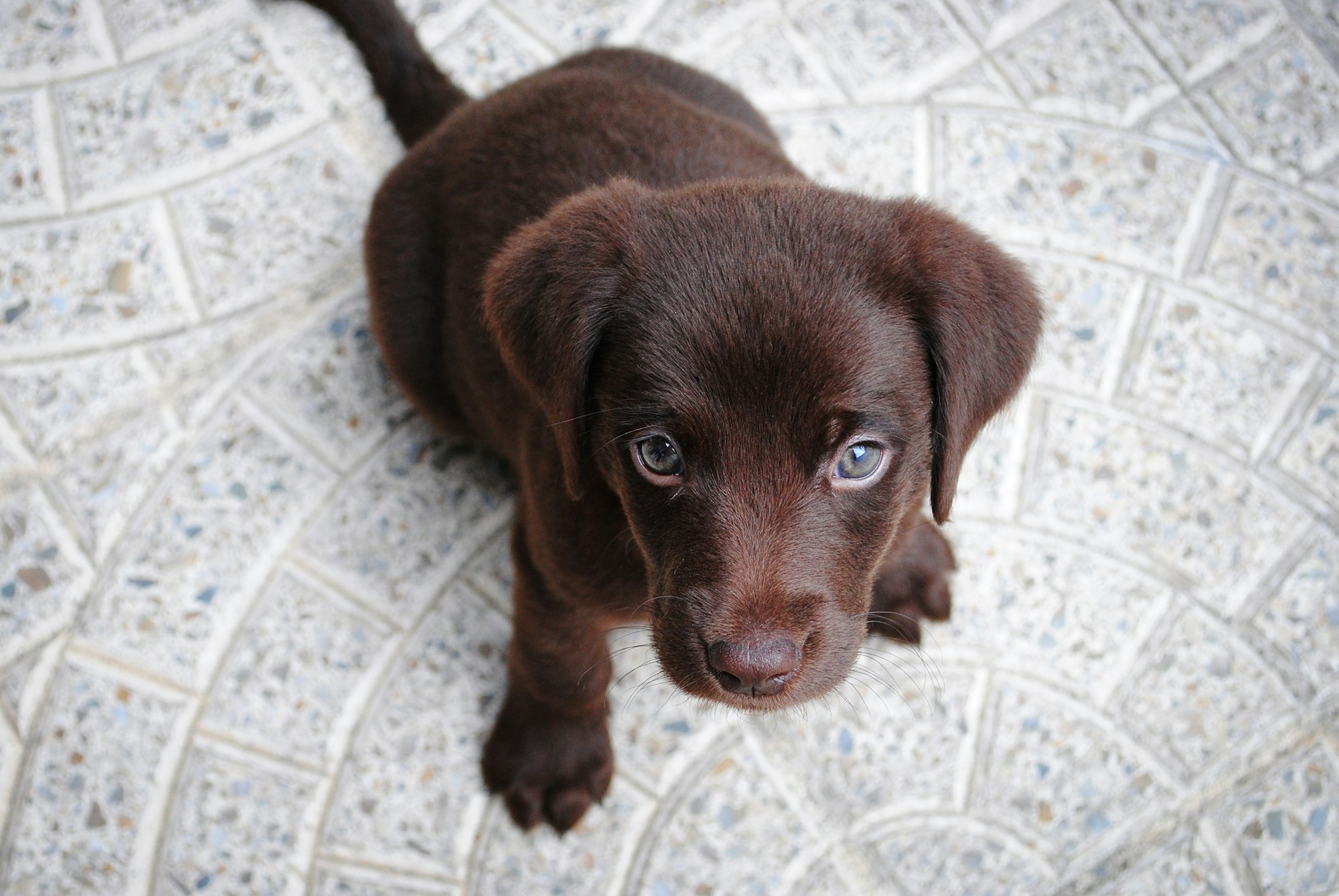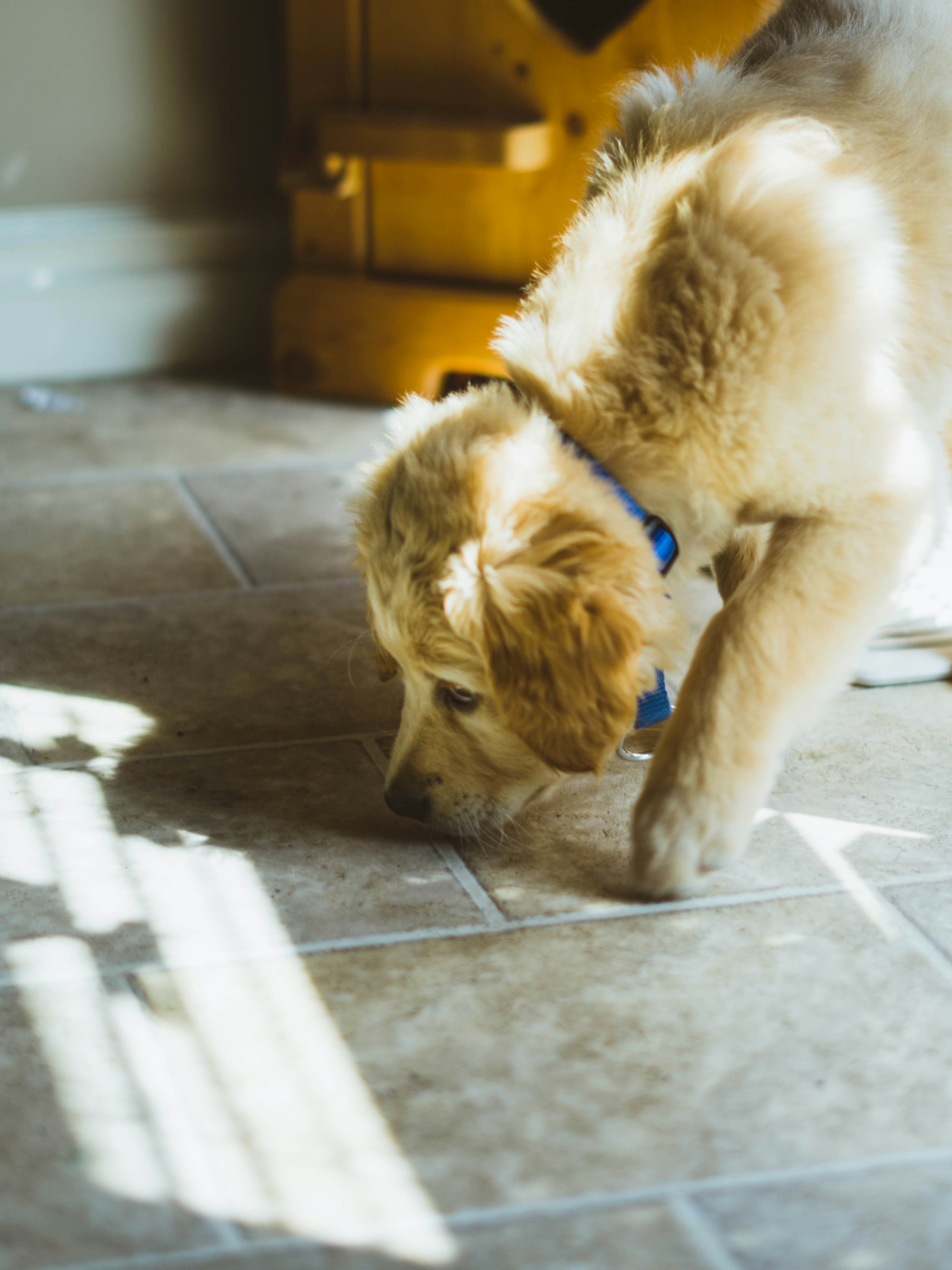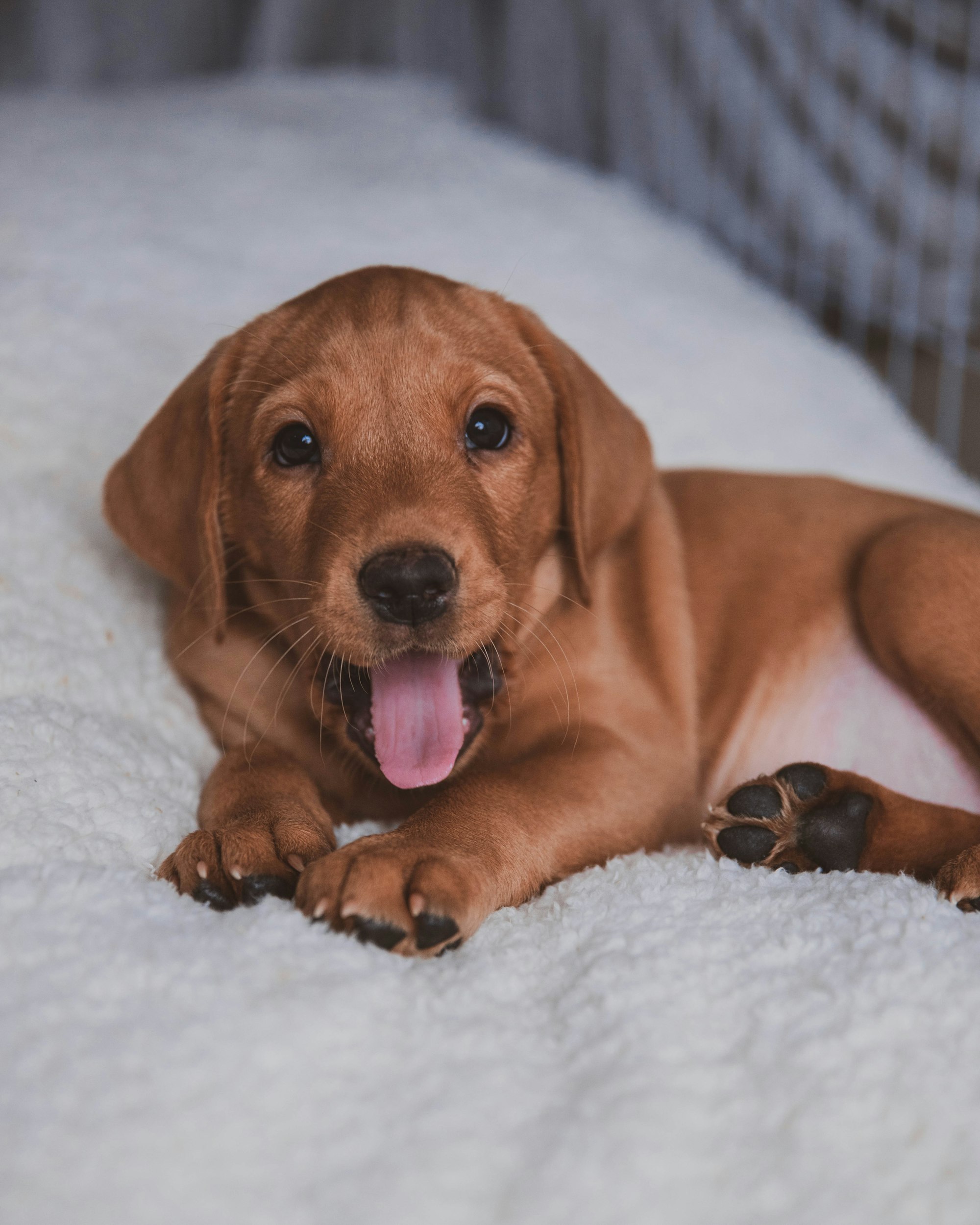Welcoming a new member into the family? Every puppy deserves a collar as it is a helpful tool for training and in case they ever go missing. Read on to find what size collar for your puppy you will need.
How to measure your puppy's neck size
All puppies are different and vary neck size, much like how people come in all sizes and shapes. For a proper fit, make sure to measure your dog's neck and don't just guess!
- Measure a few inches down from their head and then add an inch for very small dogs or two inches for medium and large dogs.
- Pull the tape snug but not tight. (If you don't have a tape measure or its too stiff, you can use a piece of string and then measure the string with a rigid ruler)
- This extra space allows enough room to slip two fingers between the collar and the dog's neck (the “Two Fingers” rule)
- When you slide the width of your two fingers between the collar and neck, the collar should feel snug, but not tight.

Collar Types
Martingale Collars
Martingale collars, sometimes called no-slip or limited-slip collars, are a type of dog collar that provides more control than a typical flat collar, and prevent dogs from backing or slipping out. Originally popular with Greyhound owners, they've become much more popular in recent years. They look similar to a flat collar, but about a third of the length of the collar is actually a smaller loop of fabric with a D-ring to attach a leash. On some martingale collars, the smaller loop is made from chain instead of fabric.
The collar works by constricting when the dog pulls on the leash, which causes the smaller loop to tighten up to a point. Unlike choke chains or slip leads (a type of training leash), Martingale's can only tighten so much before they stop, so are a great option to prevent a dog from backing out of their collar but need to be used with care. They offer comfortable security without harming your dog.

In between sizes?
If your puppy is in between the sizes listed, pick the larger of the two sizes to give them the most room to grow into. As they reach their full size, you'll want to pick the smaller of the two to avoid having extra material on the end of the collar.
Collar materials
Nylon/Polyester
Dog collars are the most prevalent types of collars. There are a huge variety of colors, patterns, and widths available. Ideal for dogs to wear around the house and on walks, nylon collars are the multi-purpose, standard collar.
Biothane
These collars are the ideal collar for dogs that love water. Biothane is made from a polyester webbing that is powder coated with either polyurethane or polyvinyl materials, and is 100% non-toxic. They are a great alternative to neoprene and leather, as they are softer, more flexible, and less expensive. Patterns and styles are more abundant than neoprene and can be a more fashionable option for pet owners looking for both style and function.
Neoprene
This material is a soft rubber material that is used in wet suits, and is reinforced with nylon webbing for added strength, stretch, and durability. Neoprene makes for excellent dog collars for dogs that spend a lot of time in the water.
Leather
These dog collars are a classic, durable style of collar that provides a great balance of both looks and practicality. While more expensive than most collars, quality leather collars can be expected to last for years.
Make sure when you are buying your dog's leather collar that you choose a collar made from genuine leather. Bonded leather, while made from real leather, is a conglomerate of scrap leathers with a bonding agent to bind them.
This type of leather may look and feel like genuine leather, but it is not as durable and is an inferior product. While bonded leather would still be suitable for a dog collar, it won't have the same durability. Rolled leather collars are generally recommended for dogs that have thick hair that easily mats around their collar.

How to plan for a growing puppy
Buy a collar that fits well now
When buying your puppy a collar, you want to get the most for your money, but don't let go overboard and put your dog at risk. Buy a collar that fits your puppy well at his current size.
While you should keep the future in mind, the most important thing is that your puppy is safe. A collar that is too big can slip over the dog's head or be chewed on. Too small collars can choke your dog, cause skin irritation, or even obstruct breathing.
Lay the one collar myth to rest
If you are fitting a collar for your puppy, you will buy another collar at some point in your dog's life. Very few dogs will fit the same collar from when they are a couple months old through adulthood. Expect that you will need to buy another collar when your dog reaches adulthood (or perhaps several times for labs!).
Find a collar that leaves room for your puppy to grow
Puppies grow. Fast. While buying a cute and impossibly small collar might be tempting, it's better to choose a collar that will fit your dog in a couple of months. Puppies grow a lot, particularly in the first few months, so you want to make sure your puppy's collar is adjustable so that you can resize it as they grow.
Usually there is some overlap between sizing. If you can find a bigger collar that fits well, choose it over a smaller one that they will outgrow quickly. Typically, the bigger the collar, the more adjustable range, so as they get bigger, the collars will also last longer.
Size your puppy regularly
Because of your puppy's rapid growth pattern, you should be sizing its neck at least every two weeks to make sure everything continues to fit well. You should be able to slip two fingers underneath your dog's collar at any time. Adjust your puppy's collar as needed or purchase a new one.
Considering a GPS Collar?
If you're looking to get a Fi GPS Collar for your puppy, the good news is we offer several sizes and the electronic portion of the collar is transferrable to new bands as your pup grows. For more information on how to do this, click here.





